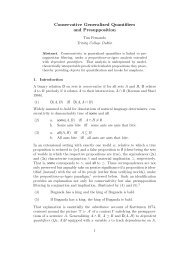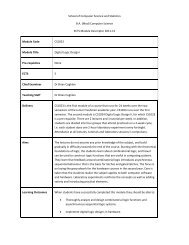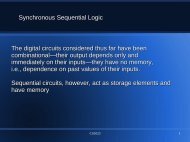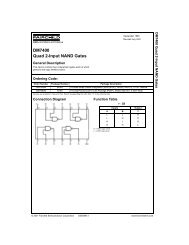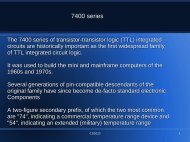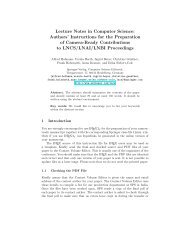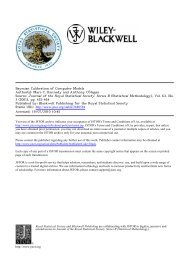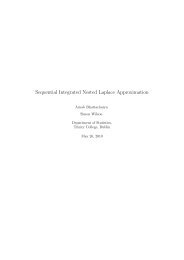Real-time Communication in Vehicular Ad Hoc Networks (VANETs)
Real-time Communication in Vehicular Ad Hoc Networks (VANETs)
Real-time Communication in Vehicular Ad Hoc Networks (VANETs)
Create successful ePaper yourself
Turn your PDF publications into a flip-book with our unique Google optimized e-Paper software.
elies on the <strong>in</strong>frastructure-less network structure. However, different from<br />
other general MANETs, a roadside base station that plays a fixed node <strong>in</strong><br />
<strong>VANETs</strong> normally acts as a master, namely a coord<strong>in</strong>ator, <strong>in</strong> the<br />
<strong>in</strong>frastructure-less network structure. The range of radio transmission<br />
determ<strong>in</strong>es the size of the area that a roadside base station covers.<br />
Theoretically, a cell and all of its contiguous cells should be covered by the<br />
radio transmission from the base station <strong>in</strong> itself. The cells could be shaped as<br />
a cellular structure that is illustrated <strong>in</strong> Figure 4.5. Each cell conta<strong>in</strong>s one and<br />
only one roadside base station. The number of vehicles is dynamic based on<br />
the movement of vehicles.<br />
Figure 4.5 Base Stations and Cells<br />
4.5.4 Send and Receive Messages<br />
Both vehicles and base stations are nodes <strong>in</strong> <strong>VANETs</strong> communicat<strong>in</strong>g with<br />
each other by send<strong>in</strong>g and receiv<strong>in</strong>g packets.<br />
38




